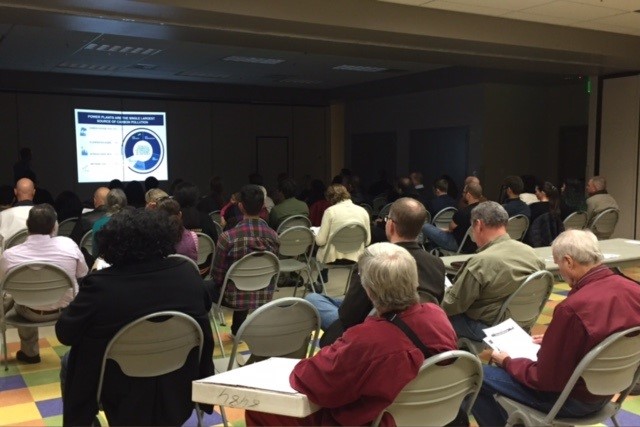Last Wednesday, over 75 Nevadans turned out for the second meeting held to discuss implementation of the state’s Clean Power Plan (CPP). Sierra Club members and allies composed more than half the audience and one-third of 32 total speakers giving testimony.
Every state is required to draft a Clean Power Plan by September of this year and to be fully within federal compliance by 2022, in accordance with the EPA. The measure is intended to cut America’s carbon emissions back 32 percent by 2030. In 2014, Nevada generated 63 percent of its electricity from natural gas, and 90 percent of all power came from out-of-state.
The meeting, facilitated by Nevada’s Department of Environmental Protection, took place at the Pearson Community Center in the historically black Las Vegas neighborhood. Discussions were held at night, making it easier for those who work during the day to attend. Including voices from diverse backgrounds is vital to the success of America's environmental movement.
The attendees included real estate developers with a stake in energy efficiency, Beyond Coal advocates, and members of the Navajo and Paiute tribes, whose primary concern is with environmental justice.
Beyond Coal Campaign volunteers sent a recruitment email and then followed up with confirmation calls to frequent rally and event attendees, says Elspeth DiMarzio, an organizer for Beyond Coal.
“Folks desire to have the Nevada plan implemented in half the time required by the EPA,” DiMarzio explains. Closing the North Valmy Generating Station by 2020 was a primary topic of discussion at the meeting, especially by the area’s high school and college students, who are alarmed by the coal-fueled plant's carbon footprint and fine particulate pollution. Among these students is Naomi Lewis, a University of Nevada Las Vegas junior and a member of the Sierra Club Toiyabe Chapter’s executive committee. DiMarzio describes Lewis as one of the evening’s standout speakers.
“Everyone my age needs to get involved,” says Lewis, who wants to see her own generation out on the front lines, promoting environmental objectives like this one. Her testimony against the coal-fired plant was driven not only by her dream for a clean energy future, but also by concern for those forced to live in close proximity to the facility. The plant disproportionately affects minority and low-income communities, who face major health consequences, like increased rates of asthma and respiratory failure.
Lewis and others will continue fighting -- they want to take this to the level of legislative reform, ensuring the most progressive CPP possible makes its way into state policy.
“We need to move forward with clean energy,” Lewis says. “Sitting back and waiting for change to happen is not an option.”
